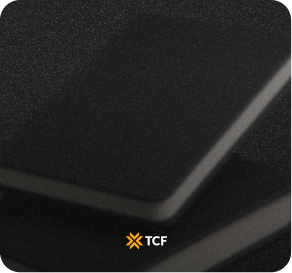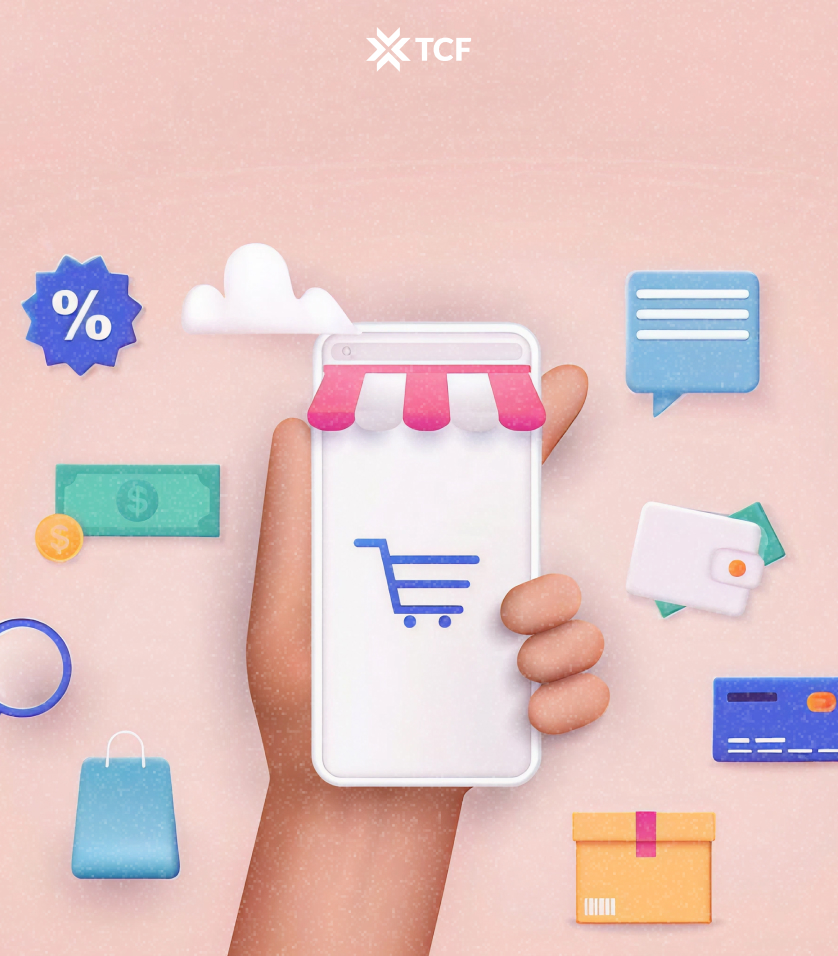Running an online pet store means going head-to-head with mega-retailers and trendy brands, all chasing the same pet parents. Ads drain your budget, and your own posts only go so far (of course you’ll say your treats are the tastiest or your toys the toughest). What actually makes people listen is when that praise comes from someone else, like a pet influencer whose followers already trust every bark, purr, or tail wag they share.
According to the American Pet Products Association, nearly two-thirds of pet owners follow at least one pet influencer on social media, which shows how massive and ready-made these audiences already are. Pet accounts on Instagram, TikTok, and YouTube have built huge, loyal fanbases who tune in daily for laughs, advice, and a dose of cuteness. Tapping into that credibility can put your store on the map.
As an influencer marketing specialist, I’ve seen how powerful pet creators can be for growing online stores. In this guide, I’m breaking down the exact process I use to choose the right partners, run smooth collaborations, and measure results. By the end, you’ll learn how to:
- Choose and vet the right pet influencers for your brand
- Negotiate partnerships and set budgets that actually work
- Collaborate on content that feels fun but still sells
- Track ROI so you know what’s paying off
- Avoid common mistakes that waste money and trust
Ready to purr-sue success?
[[cta5]]
How to Choose the Right Pet Influencers
Not every pet influencer is going to be a fit for your store. Some accounts look huge but don’t actually move products, while others with smaller followings can bring in loyal, repeat customers. Here’s how to figure out who’s worth working with.

Vetting and Authenticity Checks
Follower counts don’t tell the whole story. Before reaching out, dig into:
- Engagement rates: Are people actually liking, commenting, and sharing?
- Audience fit: Do their followers look like real pet parents who’d buy your products?
- Content quality: Is the style and vibe aligned with your brand?
- Past partnerships: Do they post thoughtful collabs or spammy promo after promo?
Red Flags to Avoid
Skip influencers who have:
- Suspiciously low engagement compared to follower count (possible bots).
- Audiences that don’t match your target buyers (like mostly teen meme followers instead of actual pet parents, for example).
- Zero disclosure on past sponsored content (not FTC-compliant).
- Content that feels inconsistent, lazy, or rushed: if they don’t put care into their posts, they won’t put care into yours.
Tools that help with vetting:
- OnSocial.ai and Modash: both double as discovery platforms and vetting tools. You can search for pet influencers by niche, location, or platform, then dig into audience demographics, engagement quality, and fake follower detection to make sure the partnership is legit.

- Upfluence or Grin: full-service influencer marketing platforms that handle discovery, outreach, and campaign management, with data on past partnerships.
- Petfluencer.com: a niche directory focused only on pet creators, perfect if you want influencers already posting pet-related content.
- StarNgage Instagram Profile Analyzer: a free Chrome extension, gives you a quick read on engagement quality without paying for big platforms.
Step-by-Step Guide to Working With Pet Influencers
Choosing the right influencer, as important as it is, is only part of the story. The real impact comes from how you approach them, set expectations, collaborate on content, and measure results. Think of it less like a one-off project and more like building a relationship that benefits both sides.
Outreach and First Contact
Pet influencers (and their humans) get a ton of DMs every day. If you sound like spam, you’ll get ignored. If you sound like a real human who actually knows their content, you’ve got a shot. Here’s how to make your first message count:
Make it personal and human
Mention their pet by name, call out a specific post you loved, and write like a real person. It’s not a corporate press release.
A “Hey, we’d love to collab” DM feels lazy, but “Your recent TikTok of Bella chasing the squeaky toy cracked us up. We think she’d love ours too” feels genuine and gets noticed.
Be clear and show the value
Keep your pitch short and upfront about what’s in it for them. Introduce your brand, explain why you’re reaching out, and hint at the partnership value, be it a free product, payment, or early access to something fun. Save the detailed terms for later once they’re interested.
Choose the right channel
- For small accounts, DMs on Instagram often work best.
- For larger influencers, check their bio for a business email. Respecting their preferred contact method goes a long way.
Outreach Sequence
Here’s the exact outreach sequence I used while managing the Poopail campaign at TCF. We tested this across dozens of creators, and it consistently got replies, even from busy inboxes.
Initial Pitch
Subject line variations:
- “[Pet’s Name] + Poopail = walk hacks unlocked 🐾”
- “A fun collab idea for you + [Pet’s Name]”
- “Making walks less 💩 and more chill”
Hey [Name],
I’m reaching out from Poopail, the scoop + storage system that makes dog walks cleaner, easier, and way less awkward. No more juggling bags or doing the mid-walk shuffle. Everything goes in one spot and you’re done.
Your content always nails those relatable pet-parent moments, like [specific reference to one of their posts]. I can already picture [Pet’s Name] stealing the show in a “first time using Poopail” clip that would crack your followers up.
If this sounds like something you’d be into, reply with short “Woof” and I’ll send over more details.
Cheers,
[Your Name]
Follow-Up #1 (3–4 days later)
Hey [Name],
Just following up in case my last note got buried. We’d love to collab with you and [Pet’s Name] to show off Poopail, the scoop + storage system that makes walks easier and way less messy.
If you’re interested, could you share your rate card and let me know what info would be most helpful? I’m happy to send over product details, sample content ideas, or anything else you’d need.
- [Your Name]
Follow-Up #2 (1 week later)
Hey [Name],
Totally get that inboxes can get wild and emails slip through, just wanted to check back in about Poopail. It’s the scoop + storage system that makes walks with [Pet’s Name] cleaner and easier, and we’d love to explore a collab with you.
I thought I’d share a couple of fun ideas we had in mind for Poopail. Imagine [Pet’s Name] starring in:
- A “first walk with Poopail” reaction clip
- A playful side-by-side of juggling bags vs. using Poopail
- A quick “dog parent hack” reel with a funny twist
What do you think, would your followers enjoy seeing something like this?
- [Your Name]
Tools to Streamline Outreach
Managing outreach can get messy fast if you’re juggling dozens of DMs and emails. The right tools help you stay organized without making your messages feel robotic.
- Airtable or Google Sheets: simple, budget-friendly ways to track who you’ve contacted, when you followed up, and their response status.
- Instantly.ai: my go-to for email outreach. It automates cold email sequences, handles deliverability, and makes follow-ups effortless while still letting you personalize the message.
- GMass or Mailshake: solid options for automating outreach via email if you want lightweight alternatives.
Quick tip: Use automation for timing and organization, but never for the actual pitch copy. Every first message should feel like you wrote it for that pet and that creator.
Negotiating Partnerships
Outreach gets your foot in the door, but negotiation is where the real groundwork happens. This is where you set expectations, agree on deliverables, and make sure both sides feel good about the partnership. The goal is to create something sustainable that makes sense for your store and for the influencer.
Key things to cover in negotiations:
- Rates and payment structure: decide if you’re offering flat fees, free products, commissions, or a mix.
- Deliverables: be specific. How many posts, what platforms, Reels vs. Stories vs. TikToks, deadlines, and any must-have hashtags or mentions.
- Usage rights: clarify whether you can reuse their content in your ads, emails, or website. This is a huge value add if negotiated upfront.
- Exclusivity: do you want them to avoid promoting competitor brands for a certain period? If so, define the timeline clearly.
Pro tip: Negotiation shouldn’t be nickel-and-diming. Pet influencers know their worth, and lowballing burns bridges fast. Instead, focus on structuring a deal where value is clear on both sides.
Contracts
Once you’ve agreed on terms, don’t leave the details buried in DMs. A proper written agreement saves time, looks professional, and keeps everyone clear on deliverables, payments, and rights. Even casual collabs benefit from a simple contract to avoid confusion and protect both sides.
At TCF, we’ve used this Influencer Contract Template with hundreds of creators. It’s easy to adapt for your store and flexible enough to work in any niche. You can download it here:
Content Collaboration and UGC
Now it’s time for the most glamorous part of marketing: content together. This is where the magic happens, but also where things can go sideways if expectations aren’t clear. The key is finding the balance between giving influencers creative freedom and making sure your brand is represented the right way.

Why creative freedom matters
Influencers know their audience better than anyone. Their followers love them for their style, humor, or authenticity, so don’t try to script every word. Instead, share your non-negotiables (like product features, hashtags, or brand guidelines) and let them do the rest.
UGC is gold
The content influencers make doesn’t have to live only on their page. With the right permissions in place, you can (should) reuse it in ads, emails, product pages, or pet store social media marketing. This user-generated content (UGC) often feels more authentic than brand-made content and performs better with audiences who are tired of polished, overly “salesy” posts.

Best practices for collaboration
- Provide your product early so they have time to try it out.
- Share a simple brief with key points, not a script.
- Encourage behind-the-scenes or “real life” moments: messy, funny, or heartwarming content usually outperforms staged shots.
- Make it easy: provide assets like your logo, brand colors, or example captions they can use as inspiration.
Pro tip: Build long-term relationships instead of one-off posts. A pet appearing with your brand again and again feels way more genuine than a single #ad, and multi-post deals also give you room to negotiate better rates.
Content Ideas for Pet Influencers
Not sure what to ask for? Here are some content formats you can give influencers and let them choose what feels natural for their audience.
- Unboxing + first reaction: Pet opens or reacts to your product for the first time.
- Before & after: Show the difference your product makes (grooming, behavior, enrichment, etc.).
- Daily routine: How your product fits into their everyday life with their pet.
- Challenge or trend: Tie your product into a TikTok or Instagram trend for fun, shareable content.
- “Pet POV”: Use a GoPro or POV-style shot to capture how the pet interacts with the product.
- Behind-the-scenes: Funny outtakes, bloopers, or the chaos of filming with pets.
Many of these formats double as evergreen promotion ideas you can reuse across your own store’s channels, from ads to newsletters.
Monitoring and Tracking
Cute posts are fun, but you need proof they’re moving the needle. Monitoring keeps you on top of what influencers are posting, while tracking shows if those posts actually drive results.
Monitoring the content
- Check sentiment: Are comments positive, neutral, or negative? The audience reaction says a lot about how the collab lands.
- Verify links and codes: Make sure influencers are using the right URLs, discount codes, and tags so your tracking actually works.
- Watch for competitor mentions: Flag if they’re promoting similar products around the same time, which can dilute your impact.
- Review content quality: Ensure the vibe, visuals, and captions align with your brand.
- Stay organized: Keep a calendar of post dates and save screenshots or links for reference.
Tracking the results
- Discount codes: unique codes (like BELLA10) to measure direct sales.
- Affiliate links: reward influencers per sale while getting transparent conversion data.
- UTM tags: add to links so you can see clicks and revenue in GA4 or Shopify.
- Boosted posts: run influencer content as Meta and Spark Ads and track engagement and ROAS.
Metrics that matter
- Sales driven by codes or links
- Engagement (likes, comments, shares, saves)
- Traffic to your store
- Growth signals like new followers, email signups, or repeat customers
Pro tip: Balance short-term sales with long-term brand value. An influencer might not bring instant conversions but can still deliver huge trust and awareness that pays off over time.
Common Mistakes That Sink Pet Influencer Campaigns
Influencer marketing can be a game-changer, but only if you avoid the traps that drain budgets and kill momentum. Here are the biggest mistakes to watch out for:
Chasing vanity metrics
It’s easy to get dazzled by big follower counts, but numbers don’t equal sales. If engagement is low or the audience isn’t aligned with your buyers, you’re throwing money into the void. Always prioritize engagement and audience quality over raw reach.
Ignoring timing and logistics
Even the best campaign can flop if the timing is off. Running a collab when you don’t have inventory ready, or failing to prep customer support for an influx of new buyers, turns a growth opportunity into a headache. Planning the logistics matters as much as the content itself.
Not setting clear KPIs
If you don’t know what success looks like, you won’t know if you’ve hit it. Go into every partnership with clear goals (sales, sign-ups, engagement, or brand awareness), so you can measure performance and make smarter decisions next time. This is one of those pet shop ecommerce tips that often gets overlooked, but it’s what separates guesswork from growth.
Avoiding these mistakes keeps your influencer strategy lean, trackable, and repeatable, so every collaboration builds momentum instead of draining your budget.
Conclusion
Pet influencer marketing taps into trust and community. I’ve seen it firsthand how with the right partners, clear agreements, and consistent tracking, collaborations can feel natural and drive growth for your store.
The pet industry keeps expanding, and there is space for brands that connect authentically. Begin with a few partnerships, learn what works, and build from there. Over time, these connections turn into steady sales, loyal customers, and stronger brand presence.
Treat influencer marketing as a way to join the conversations pet parents already care about. Done well, it creates lasting visibility and deeper trust for your store.
[[cta5]]






.png)


.png)


.jpg)

.jpg)